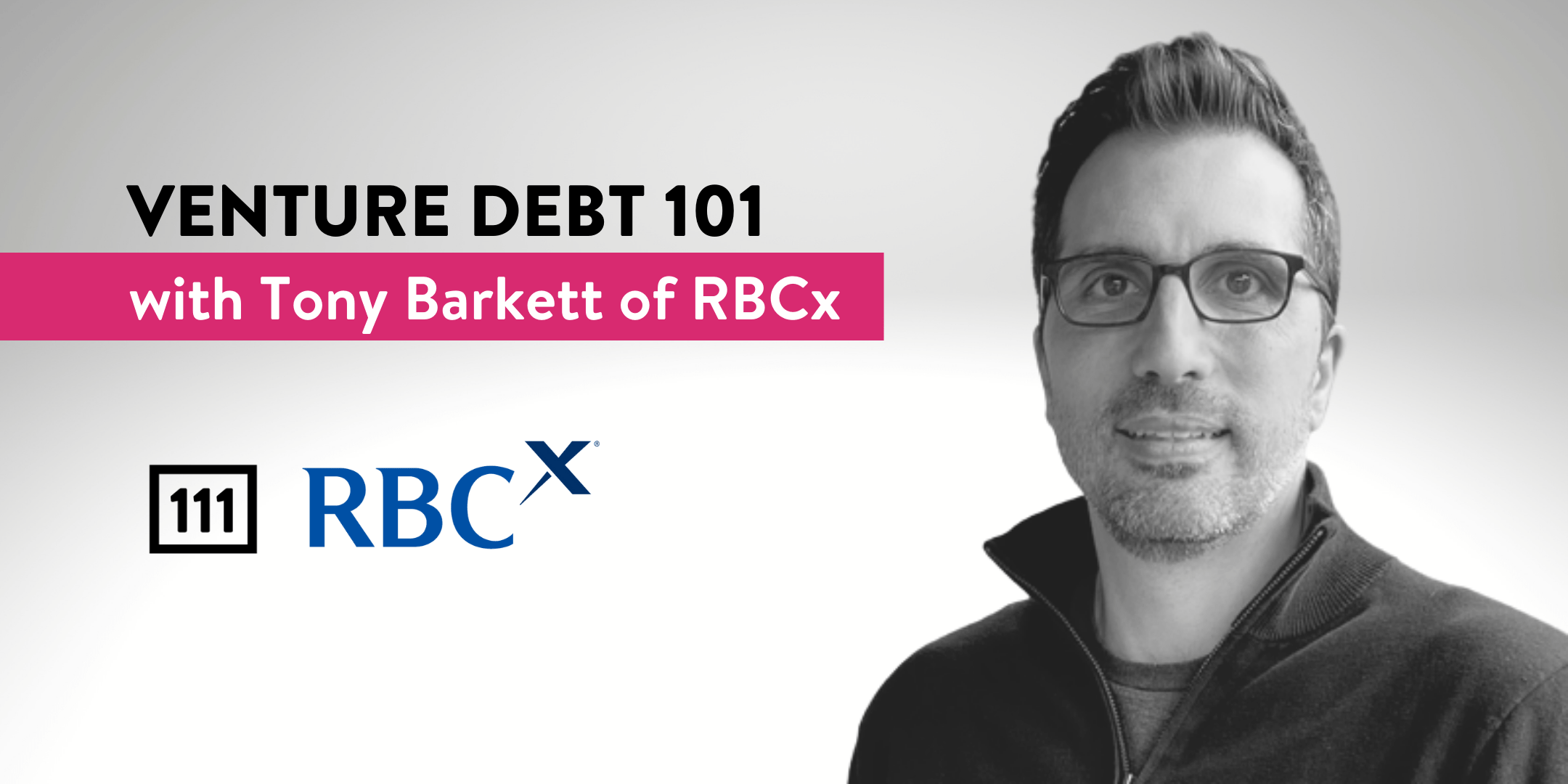Last month, the OneEleven community heard from Tony Barkett, Managing Director at RBCx, about venture debt. Tony shared his view on what founders need to know and what RBCx looks for when helping promising businesses achieve scale. What is the purpose of venture debt? The purpose of venture debt is to extend the cash runway in order to allow a company to hit additional milestones and raise the next round of equity at a higher valuation. Ultimately, with a longer time horizon to achieve milestones that drive increased enterprise value without necessarily using equity dollars, existing investors retain a larger ownership in an acquisition or IPO by leveraging venture debt. What are the general market terms for venture debt? According to Barkett, there are some general market terms companies should be aware of for venture debt.
- Facility Type – Venture debt is a committed amortizing term loan, which means once a lender enters a loan agreement, barring unforeseen circumstances or material degradation of a business, it must fund within the draw period if requested by the company. Venture Debt is collateralized by an all asset lien which will generally have a Negative Pledge on IP (meaning a Company doesn’t have to pledge IP as collateral for Venture Debt, but can’t pledge the IP as collateral to another third party). Typically, venture debt offers 12-24 months of an interest only drawdown period with no requirement to borrow. Whatever is borrowed over that time amortizes over the next 30-36 months.
- Facility Amount – Venture debt typically represents 20-40% of a Company’s most recent equity round and is a supplement to equity, not a replacement. Amounts larger than this typically put unnecessary leverage on a growth-stage company, and the burden of debt service after the draw period may hamper a company’s growth or potentially be an impediment when attracting new investors in the next round.
- Economics – there are multiple drivers of cost on a venture debt facility:
- Upfront fee (typically referred to as a commitment fee) that will range from 10-20 basis points (bps) of the commitment amount.
- Interest rate will generally be mid-single digits (4-6%) depending on the competitive environment and other pricing mechanisms.
- Warrants for equity share – preferred or common (anywhere between 15-30bps of fully diluted ownership (FDO).
- Prepayment penalty equal to 1-2% of the drawn amount to be paid if the venture debt term loan is repaid early, typically within the first 3 years following closing.
- A final payment that can be utilized in lieu of other pricing mechanisms to reduce the up-front costs of putting a debt facility in place (generally 4-6% of total commitment amount).
- Covenants – Venture debt doesn’t typically have financial covenants (e.g. liquidity or leverage). They do have non-financial covenants, which includes Material Adverse Change (MAC) or Investor Abandonment (IA) clauses.
- Investor target profile & diligence



